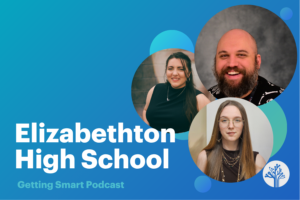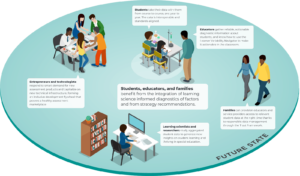Does Mastery Mean Mastered?

Ask a teacher, “How do you know your students can add fractions?” Ask a project manager, “How do you know if team members are really collaborating?”
It is challenging to define competencies that are clear and signal important priorities without being oversimplified. Assessing and tracking skills is complicated. In a Common Core Toolkit, standards authors warned that “fragmenting the Standards into individual standards, or individual bits of standards, erases all these relationships and produces a sum of parts that is decidedly less than the whole.” They worried about their rich standards being turned into checklists.
If one of our goals is for students to be challenged every day and to master important skills, they need a better way to progress through school than counting birthdays.
For demonstrations of mastery to be the standard mechanism for progress and foundational architecture of the K-12 education system, getting standards and assessments right is key—but it’s enormously difficult, particularly within the scope of a system transformation. When considering the challenging transformational shift to a new learning model such as competency-based education (CBE), determining mastery for competencies is critical for success. In an overview of K-12 CBE, Competency Works and iNACOL define CBE as:
- Students advance upon demonstrated mastery;
- Competencies include explicit, measurable, transferable learning objectives that empower students;
- Assessment is meaningful and a positive learning experience for students;
- Students receive timely, differentiated support based on their individual learning needs; and
- Learning outcomes emphasize competencies that include application and creation of knowledge, along with the development of important skills and dispositions.
Interwoven into these traits is the need to provide strong assessment protocols to recognize learning needs, and to celebrate learning growth. Both of these are essential for building learner agency and both are ideally communicated in progress reports, data dashboards, and report cards.
Making the shift to a mastery grading system requires strong protocols, transparent and consistent communication, and supportive policies. Any grading system must be rooted in a defined learning model to be truly impactful; a learning model that defines graduate outcomes, instructional practices, and recording/reporting systems. Choosing the right digital management systems is a critical step in moving toward a CBE system. Whether a district is considering a learning management system or a stand-alone assessment dashboard, the choice will be impactful for learning systems. All but a few recent learning platforms were not designed for personalized and competency-based learning. Supporting good practices with the right tools continues to be a challenge for the sector.
In CBE, learning organizations strive to define mastery beyond philosophical terms. Systems need to define what showing mastery means and what rating systems are used for communication, such as defined likert scales, rubrics or scoring guides. Systems should also consider how often a learner needs to show mastery and the variation of assessments. Mastery will then describe the level of achievement of a particular standard or how well a student needs to know something in order to apply that skill. These protocols can be defined within instructional learning models or in an assessment framework.
When CBE receives criticism, it’s often focused on the grain size of the targeted learning objectives and to what level it is assessed. Mastery within a competency system is focused on application and creating a larger body of knowledge. Competencies should emphasize the application of skill and lead to an understanding of theories or conceptual knowledge. Mastery is defined in terms of application and retention, not checklists.
Organizations transitioning to a CBE system will require a transcript translation for Carnegie crediting. While there are varied beliefs on the importance of this translation, learners still live in a world that uses this benchmark for postsecondary pathways. In addition to this understanding, learners may leave or transfer out of a system for a variety of reasons and reporting systems must be in place to appropriately capture their learning for their next learning organization.
Over the next several weeks, we’ll be exploring what mastery is and how it is determined, recorded and managed through various blogs related to mastery. Stay tuned for new content and please let us know if this is something your learning organization has been tackling. We’d love to hear from you; comment below or join the conversation on Twitter using #MasteryLearning.
Lastly, we’re excited to share that Getting Smart readers have been given advanced access to the MasteryTrack Grant Program! The deadline is October 1, 2019 and MasteryTrack has made available a series of support sessions to help you learn more about the grant and get access to technical assistance. Click here to register.
For more, see:
- Show What You Know: A Landscape Analysis of Competency-Based Education
- Teachers Deserve Better Tools for Tracking Subskills
- The Art and Science of Designing Competencies
This blog is part one of a series on mastery, sponsored by MasteryTrack. If you’d like to learn more about our policies and practices regarding sponsored content, please email Jessica Slusser. For other posts in the series see:
- What is Mastery Learning?
- Demonstrating and Assessing Mastery, and Managing Mastery Learning Data
- Mastery Learning Objectives and Mastery Thresholds in the Classroom
Stay in-the-know with all things innovations in learning by signing up to receive our weekly Smart Update. This post includes mentions of a Getting Smart partner. For a full list of partners, affiliate organizations and all other disclosures please see our Partner page.







Susan Dugle
Great article summarizing the current work of
Shelby County Public Schools in Kentucky. I look forward to continual learning in this area.